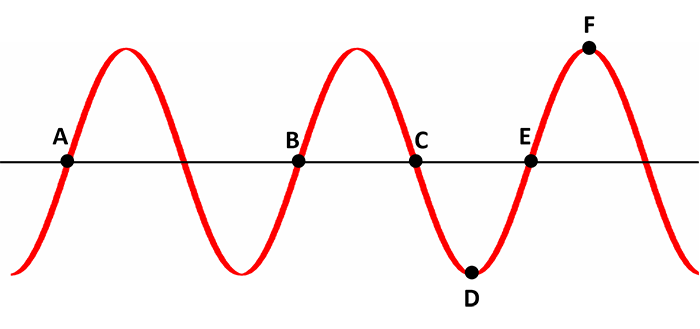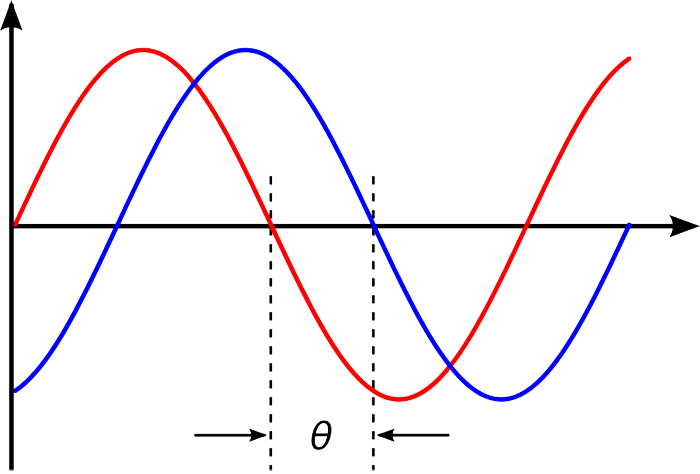Waves can be mathematical, described with sinusoidal functions. It takes one cycle to move through the waveform and return to your starting displacement position from baseline. The phase is a way to describe where you are on the wave form at a particular point in time. Phase values move through 0o to 360o (0 to 2π radians).
In waves "phase" has two different, but closely related, meanings. One is the fraction of the wave cycle that has elapsed relative to the origin and another is the initial angle of a sinusoidal function at its origin (commonly referred to as phase offset).

To the left, is a standing wave with positions A-F noted. Traveling from A to B represents one cycle of the wave, B to E another cycle. A, B, and E are said to be in phase as they have the same displacement from baseline and are traveling in the same direction (up from a trough, not down from a crest). Position C is 180 degrees (π radians) out of phase with A, B, and E, while D is 180 degrees out of phase with F. E is 90 degrees (π/2 radians) out of phase with F.
Phase Difference
Phase difference is the difference, expressed in degrees or time, between two waves having the same frequency and referenced to the same point in time.
Waves are said to be in phase if there is no phase difference between them. Waves are said to be out of phase if there is a phase difference, and the amount is expressed in degrees (0o-360o) or in radians (0 to 2π).
Knowledge Check:
Can you define the following terms?
- phase
- phase shift
- phase offset
- phase difference
For further reading on Phase, see Wikipedia page.
For further reading on Radians, see Wikipedia page.
